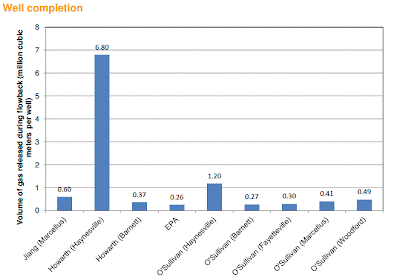 |
| Picture by: Oxfam on Flickr |
The impact of biofuels option on climate change has been another area of immense debate.
Supporters of biofuels consider it a carbon-neutral option. The carbon that would be released arising from its use, should theoretically not exceed the amount earlier absorbed through photosynthesis. Life cycle analysis (LCA) studies conducted in the early 2000s generally demonstrated the potential of biofuel in reducing Global Warming Potential (GWP), as compared to fossil fuel use.
 |
| GHG Emissions (gCO2-eC m^2/yr) Source: Adler et al (2007) |
The LCA conducted by Adler et al (2007) on biofuel cropping systems suggested that ethanol and biodiesel from crop rotations reduced greenhoue gas (GHG) emissions by between 40-115% as compared to the life cycle of gasoline and diesel.
An earlier LCA study by Spath and Mann (2004) also illustrated that producing electricity from biomass instead of fossil fuels with CO2 sequestration, can be a cost effective solution in reducing GHG emissions.
However, recent studies have asserted that biofuels may not be as carbon neutral as we have assumed. Indirect carbon emissions arising from landuse change were not factored in earlier LCAs that could have major impact on the climate. Fargione et al (2008) suggested that converting natural habitats such as peatland and savannas to produce food crop–based biofuels creates a “biofuel carbon debt” by releasing 17 to 420 times more CO2 than GHG reductions from fossil fuels avoidance arising from biofuel use.
Greater biofuel production might also decrease overall energy prices, leading to an increase in energy consumption and GHG release.
Holtsmark (2011) analysed the production of wood-based biofuels and concluded that the increased harvest of a boreal forest will create a biofuel carbon debt that takes 190–340 years to repay, and thus would not constitute a climate-neutral option.
Apart from landuse, the issue of indirect emissions was raised by Melillo et al (2009) who argued that increases in fertilizer use leading to more nitrous oxide emissions will be more important than carbon losses themselves in terms of warming potential.
Schulze et al (2012) also cautioned that biofuels production could result in a reduction of biomass pools that may take decades to centuries to be paid back by fossil fuel substitution. Depleted soil fertility will make biofuel production unsustainable and require fertilization, which in turn increases GHG emissions due to N2O emissions. The IPCC has listed N2O as having a GWP that is 310 times more that CO2 over a 100-year timeframe.
Apart form the science, the paper by Gasparatos et al (2013) suggested that there are still many areas of social-economic and environmental areas of concern that needs to be addressed in relation to biofuels production, such as rural development, biodiversity loss and water pollution. For example, the Guardian in October 2013 reported that campaigners condemned new UN recommendations on biofuels, claiming that they defend the interests of the industry rather than those of small farmers in poor countries.
These add on to the myriad range of considerations behind the sustainability of biofuel as a climate change mitigation alternative.
On balance, I believe that biofuels offer an option to diversify the energy mix for societies that may be constrained in terms of natural resources, contributing towards energy security. However, biofuels bring along a set of social and economic issues such as food security that would decision makers would need to consider. There may also be a need to consider more robust forms of life-cycle analysis that takes into consideration indirect CO2 emissions arising from areas such as land use change and fertiliser production, so that a more comprehensive assessment can be made to determine the carbon-neutrality of biofuels.



+Comparison.GIF)

.jpg)


